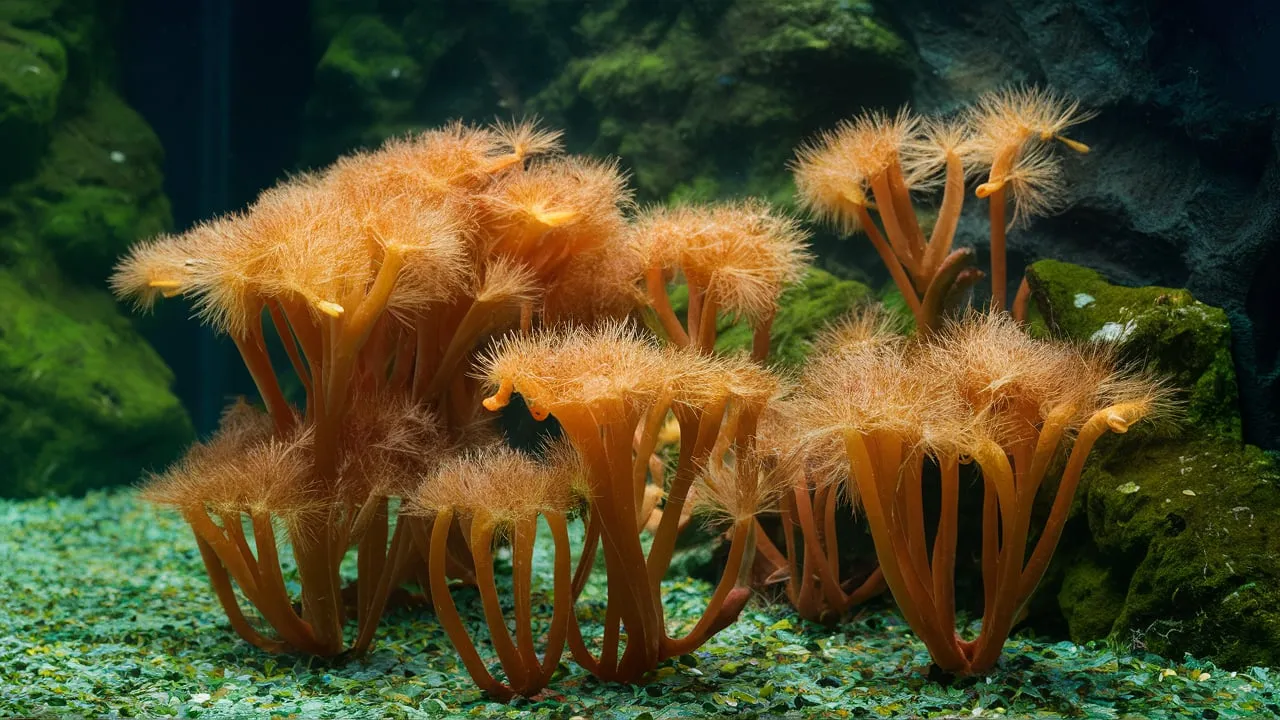Culture Of Infusoria is a collective term for tiny, single-celled organisms. They are a vital food source for newly hatched fish, providing them with the essential nutrients they need to thrive.
This Betta Fish Guide will walk you through the process of culturing infusoria in your tank, covering everything from choosing the right method to troubleshooting common issues.
What is Infusoria?
Infusoria is a collective term for various microscopic aquatic organisms, primarily consisting of ciliated protozoans. These tiny creatures play a crucial role in the aquatic food chain, serving as a vital first food for many fish fry and other small aquatic organisms.
The Importance of Infusoria in Aquariums
In the wild, newly hatched fish fry naturally feed on infusoria present in their environment. In a controlled aquarium setting, especially for species like bettas that lay many eggs, cultivating infusoria can significantly increase the survival rate of fry.
According to a study published in the Journal of Applied Aquaculture, fry fed with cultured infusoria showed a 30% higher survival rate compared to those fed with commercial micro-foods alone.
Types of Infusoria
While the term “infusoria” encompasses a variety of microscopic organisms, some common types used for fish fry include:
- Paramecium: These are among the most common and readily available infusoria, known for their slipper-like shape.
- Vorticella: These bell-shaped organisms are often found attached to surfaces in aquariums.
- Euglena: These green, flagellated organisms are a good source of chlorophyll and other nutrients.
How to Culture Infusoria in Your Tank?
Culturing infusoria is a relatively simple process that can yield great rewards. Here’s a step-by-step guide to get you started:
Choosing the Right Container
Select a clean, transparent container. A glass jar or a small tank works well. The transparency allows light to penetrate, which is crucial for the growth of infusoria.
Preparing the Culture Medium
There are several methods to prepare the culture medium:
Method 1: Plant Matter Infusion
- Fill your container with dechlorinated water.
- Add organic matter such as lettuce leaves, banana peels, or grass clippings.
- Let it sit in a warm, well-lit area for about a week.
Method 2: Hay Infusion
- Place a handful of hay or dried grass in your container.
- Fill with dechlorinated water.
- Add a pinch of wheat flour to provide additional nutrients.
Method 3: Commercial Infusoria Starters
- Some aquarium stores offer commercial infusoria starters, which can jumpstart your culture.
Seeding the Culture
To introduce infusoria to your culture:
Add a small amount of “mulm” (detritus from the bottom of an established aquarium) to your prepared medium.
Alternatively, squeeze out some water from a sponge filter or filter media from an established tank into your culture.
Maintaining the Culture
- Place the container in a warm area with indirect sunlight.
- Avoid direct sunlight as it can cause overheating and algae overgrowth.
- The optimal temperature range for infusoria growth is between 70-80°F (21-27°C).
Monitoring Growth
- After a few days, you should notice the water becoming cloudy. This is a good sign!
- Use a magnifying glass or microscope to check for tiny moving organisms.
- The culture is usually ready for use in 5-7 days.

Harvesting and Feeding Infusoria
When your culture is ready, it’s time to feed your fry:
- Use a turkey baster or pipette to draw water from the upper layers of the culture.
- Add this infusoria-rich water directly to your fry tank.
- Start with small amounts and gradually increase as the fry grow.
Remember, overfeeding can lead to water quality issues, so monitor your fry tank closely.
Advanced Techniques for Infusoria Culture
Continuous Culture Method
For a steady supply of infusoria:
- Set up multiple cultures staggered by a few days.
- As you use one culture, start a new one to replace it.
- This ensures a constant supply of infusoria at different growth stages.
Using Air Pumps
While not necessary, gentle aeration can help:
- Prevent stagnation
- Increase oxygen levels
- Promote more uniform growth of infusoria
pH Management
Infusoria thrive in slightly alkaline conditions:
- Aim for a pH between 7.0 and 8.0
- Use crushed coral or a small piece of cuttlebone to maintain pH if needed
Common Challenges and Solutions
Problem: Culture Smells Bad
Solution: This usually indicates overfeeding or decay. Start a new culture and be more conservative with organic matter.
Problem: No Visible Growth
Solution: Check your water source for chlorine, ensure proper lighting, and try seeding from a different established tank.
Problem: Algae Overgrowth
Solution: Reduce light exposure and consider using an opaque container for part of the day.
Conclusion
Culturing infusoria in your tank is more than just providing food for fry; it’s about creating a thriving, balanced ecosystem. At Betta Fish Guide, we believe that understanding and working with nature is key to successful fishkeeping.
Whether you’re a seasoned breeder or a curious hobbyist, mastering infusoria culture can open up new possibilities in your aquarium journey. It’s a fascinating process that connects you directly to the intricate web of life in your tank.

Related Posts
Almond Leaf For Betta: A Natural Habitat Enhancer
Clamped Fins On Betta: Causes & Treatment
Pregnant Betta Fish Giving Birth: Signs & How To Care